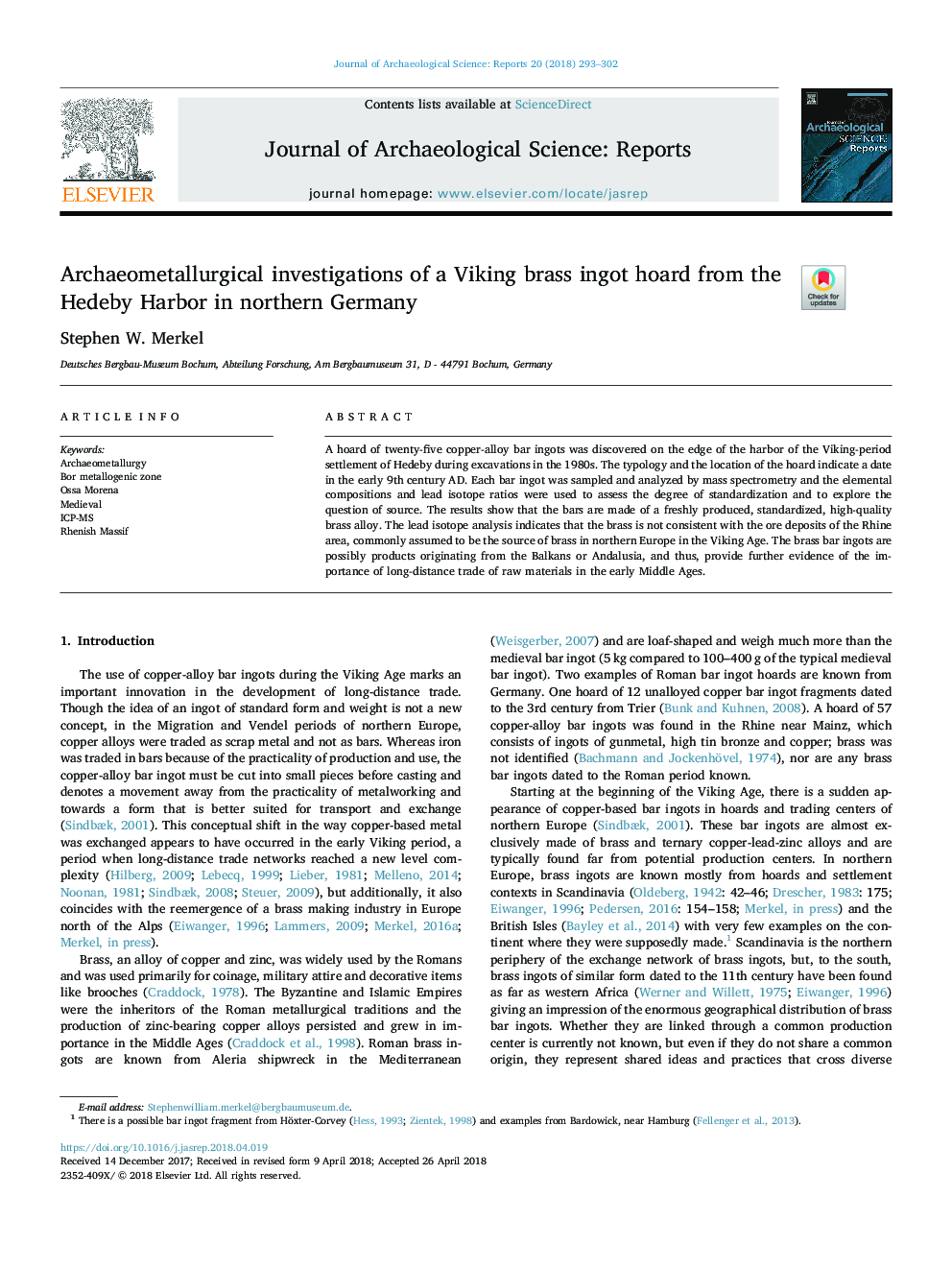| Article ID | Journal | Published Year | Pages | File Type |
|---|---|---|---|---|
| 7444330 | Journal of Archaeological Science: Reports | 2018 | 10 Pages |
Abstract
A hoard of twenty-five copper-alloy bar ingots was discovered on the edge of the harbor of the Viking-period settlement of Hedeby during excavations in the 1980s. The typology and the location of the hoard indicate a date in the early 9th century AD. Each bar ingot was sampled and analyzed by mass spectrometry and the elemental compositions and lead isotope ratios were used to assess the degree of standardization and to explore the question of source. The results show that the bars are made of a freshly produced, standardized, high-quality brass alloy. The lead isotope analysis indicates that the brass is not consistent with the ore deposits of the Rhine area, commonly assumed to be the source of brass in northern Europe in the Viking Age. The brass bar ingots are possibly products originating from the Balkans or Andalusia, and thus, provide further evidence of the importance of long-distance trade of raw materials in the early Middle Ages.
Related Topics
Social Sciences and Humanities
Arts and Humanities
History
Authors
Stephen W. Merkel,
